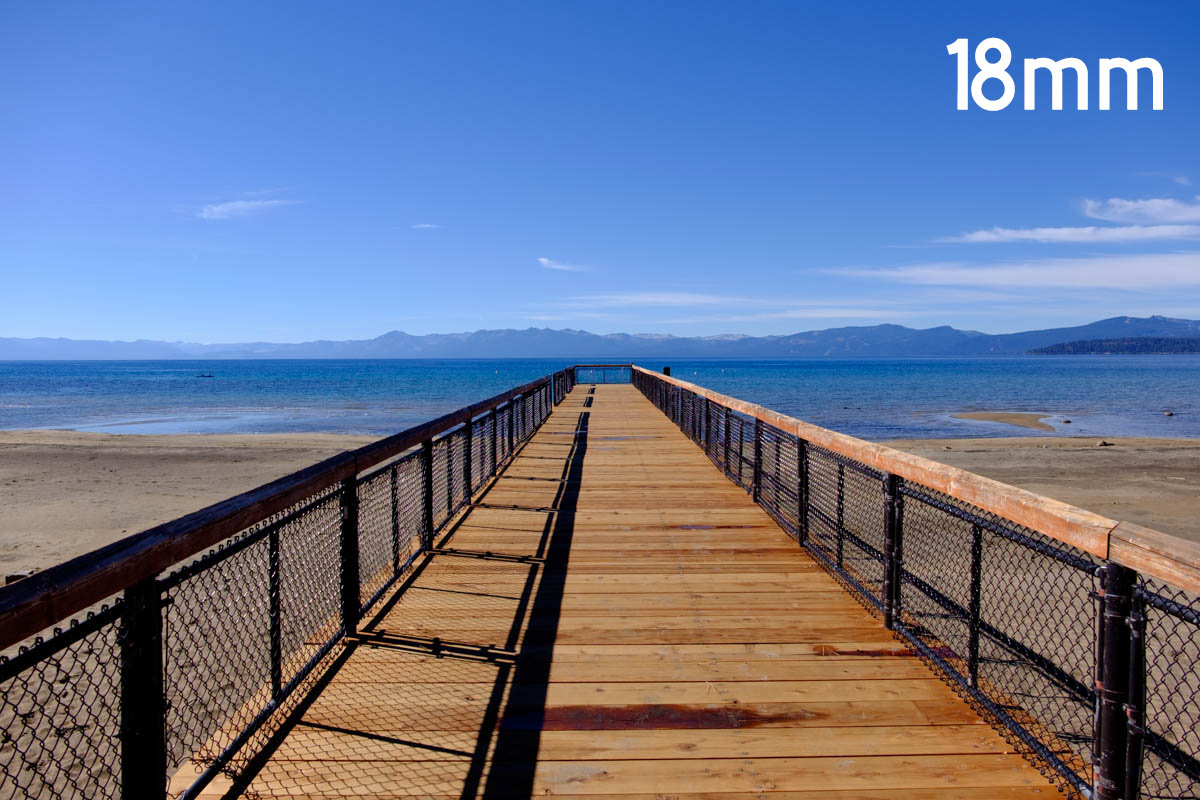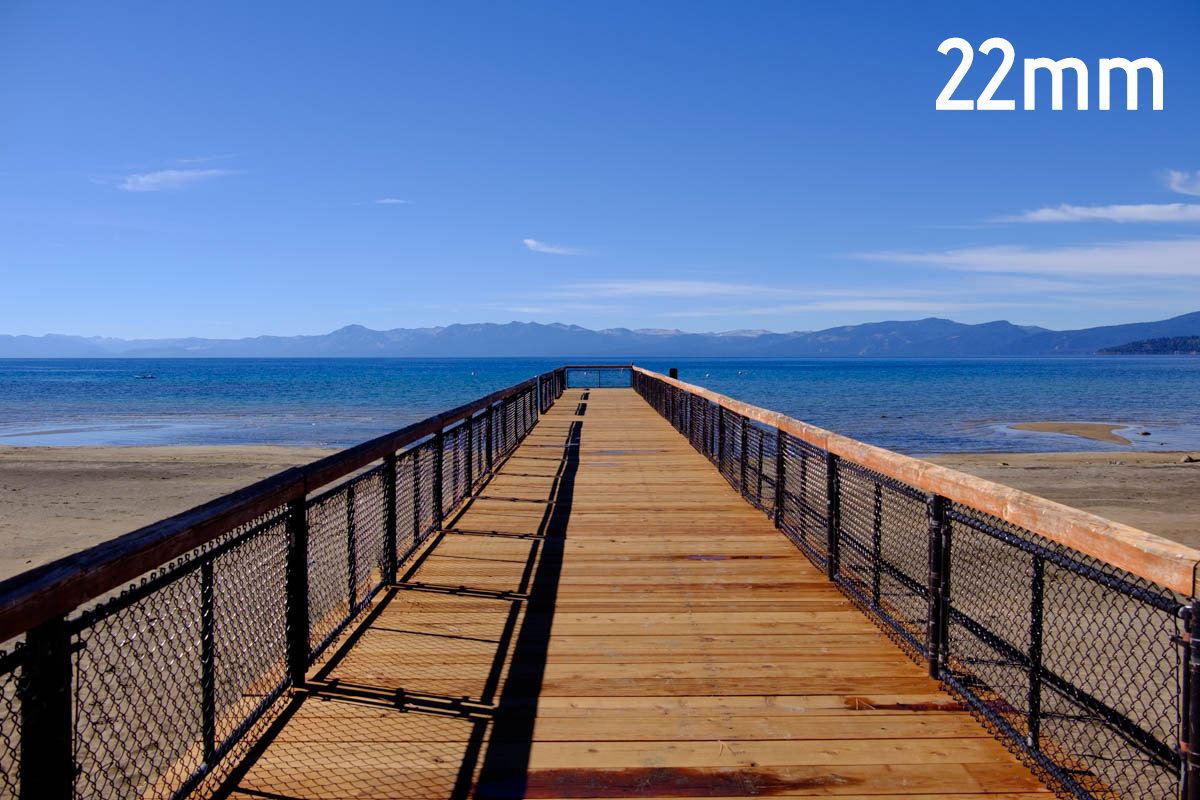Lens compression is a byproduct of zoom lens that has both Pros and Cons. However, you can use this to your advantage sometimes once you know how it works. Especially for landscape photography.
When you take a lens that has a zoom range of 24-105mm as an example, at 24mm which is the widest focal length, distant objects will appear even further away as the lens is capturing more of the scene in the frame so it pushes away distant object even further away from us. As you zoom in the field of view reduces and the distant objects come in closer. At 105mm for example the same scene is so compressed distant objects appear even closer than they actually are. This ends up creating a grandeur scene.
Consider the following example where you have a series of images all shot standing at the exact same spot but only at different focal lengths from 18-135mm. These images were captured using a Fujinon XF 18-135mm F3.5-5.6 LM OIS WR Lens attached to a Fujifilm X-T1 at Lake Tahoe in Reno, Nevada. Although this spot Kings Beach State Recreation Area is part of the California portion of the lake. The camera is pointing South towards the far end of the lake.
Now let’s break it down into each frame and see the effect of the Lens Compression
Focal Length 18mm
At this focal length the far end of the lake does seem very far. In fact it is 20 miles or 33 kilometers away.
Focal Length 22mm
With a small change in zoom the mountains on the far end appear a little bit bigger but no so much.
Now let’s really zoom in further.
Focal Length 66mm
Now we have zoomed in 3x more than last focal lenght. And now we can see still plenty of the pathway but the mountains appear much closer.
Let’s max out the zoom on the lens now.
It always help to have a foreground element when you are trying to create such an image which gives the image much more depth.
What do you think about using the zoom lens to bring in close distant object? Let us know your thoughts.














